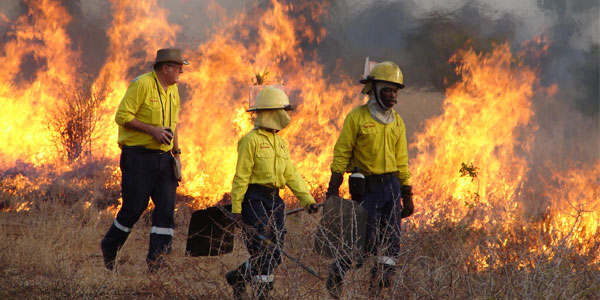Species across the globe at risk
- Wits University
Changes in fire activity are threatening more than 4 400 species globally.

Changes in fire activity are putting at risk more than 4 400 species across the globe, says a new paper led by the University of Melbourne, involving 27 international researchers, including Professor Sally Archibald from the School of Animal, Plant and Environmental Sciences at Wits University.
“Those species include 19% of birds, 16% of mammals, 17% of dragonflies and 19% of legumes that are classified as critically endangered, endangered or vulnerable,” said lead author, Dr Luke Kelly, a Senior Lecturer in Ecology and Centenary Research Fellow at Melbourne University. “That’s a massive number of plants and animals facing threats associated with fire.”
The paper, Fire and biodiversity in the Anthropocene, published in Science, found that the species categorised as threatened by an increase in fire frequency or intensity, include the orangutan in Indonesia and mallee emu-wren in Australia.
“Recent fires have burned ecosystems where wildfire has historically been rare or absent, from the tropical forests of Queensland, Southeast Asia and South America to the tundra of the Arctic Circle,” Kelly said.
“Very large and severe fires have also been observed in areas with a long history of recurrent fire, and this is consistent with observations of longer fire seasons and predictions of increased wildfire activity in the forests and shrub lands of Australia, southern Europe and the western United States.”
The research team also found a striking example from Australia: the total area burnt by bushfires in the eastern seaboard from August 2019 to March 2020, 12.6 million hectares, was unprecedented in scale.
However, some species and ecosystems are threatened when fire doesn’t occur. Frequent fires, for example, are an important part of African savanna ecosystems and less fire activity can lead to shrub encroachment, which can displace wild herbivores such as wildebeest that prefer open areas.
“Understanding what’s causing changes in different places helps us to find effective solutions that benefit people and nature,” Kelly said.
Wits Professor Archibald, said that scientists and rangeland managers in Africa are world leaders in prescribed burning for biodiversity, and have pioneered several novel approaches including patch mosaic burning (Beckett IJWF 1999) and fire storms (Smit J App Ecol 2016).
"Due to this new publication in Science, the global conservation community is starting to recognise the value of managed fire for conserving biodiversity and African scientists and land managers are an active part of this new movement", she said.
The researchers identified three main groups of human drivers as transforming fire activity and its impacts of biodiversity: global climate change, land-use and biotic invasions. This means that people and governments around the world need to act and confront the diverse changes to the environment that are occurring.
"We have to take a hands-on approach to fire and work to apply fire regimes that we deem appropriate for our ecosystems,” said Archibald. Emerging actions include large-scale habitat restoration, reintroductions of mammals that reduce fuels, creation of low-flammability green spaces and letting bushfires burn under the right conditions.
